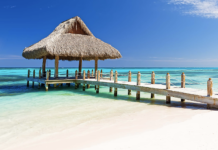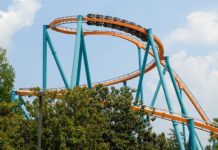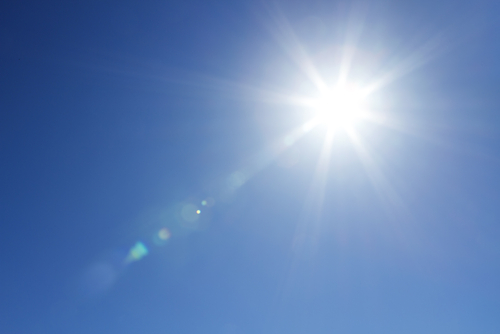White water rafting is a sport that has become increasingly popular over the last fifteen years. Opportunities to brave the rapids can be found across the globe.
The United States has a couple of well-known rafting sites.
In Idaho, the Salmon River draws thousands each year. Controlled by melting snow, the rapids are class IV and V during late June and early July, but the water is freezing. Tourists can wait until later in July or August for warmer water and smaller rapids (class III and some IV).
Also in the US is the Upper Ocoee River in Tennessee. This section of the river has gained notoriety since its selection as the site for the Olympic Whitewater competition in 1996. It is controlled by a dam, but the class III and IV rapids are only available in July and August.
Canada has its share of rafting opportunities as well, such as the Alsek and Tatshenshini Rivers. A typical two-week rafting package would begin in the Yukon Territory, carry rafters through British Columbia, and end in Glacier Bay National Park in Alaska. These trips are offered in July and August and offer Class III+ rapids.
The West Magpie River is a harder course that requires rafters to have some previous experience. Since it is less travelled, many of the Class III, IV and IV+ rapids have not even been named yet. Trips there are offered all summer.
In Ecuador, the Rio Upano is a great choice because it has a variety of sites along the class II, III and IV river. From November to January, rafters can glide down much of the river and enjoy beautiful views of rainforests, waterfalls and villages.
The Futaleufu River in Chile is divided into two sections for rafters who want to choose their comfort level. The Upper Futa Limite is great for families with younger children. The half-day trip is mostly class II and can be combined with other outdoor adventures. The Infierno Gorge, however, is a full-day adventure full of class IV and V rapids.
Australia has a number of rafting sites too, with one of the longest runs anywhere in the world. The North Johnstone River has rapids classified as IV and V. Because it is a naturally-flowing river, the best trips are to be had from April to June, and trips can be arranged that last anywhere from 4 to 6 days.
In Nepal, the Sun Kosi River is an off-season choice, since January to May is its peak time. A class V rapid in many places takes tourists through valleys, plains and mountains.
Turkey’s Coruh River rafting trips usually start at Bayburt and travel through class II and III rapids over about 3 days. The river churns into class III, IV and V between Ispir and Camilikaya on the second leg of the trip. The third part, from Camlikaya to Tekkale, is also considered class III, IV and V. Finally, the last portion of the trip, which will end at Artvin, contains the class V climax called “King Kong”.
In Italy, the Noce River is a well known white water rafting destination. The rapids build gradually from class III up to class V. This river is available during the summer months.
From May to June, the snow-fed Dora Baltea River is very challenging. The river can also be run from July to September by less experienced rafters, as it will be much calmer.
Just below Victoria Falls in Zimbabwe, the Zambezi River is arguably the best day-trip for white water rafting in the world, with almost half of its rapids categorized as class V. The course opens in the middle of February and closes at the end of June.
For rafting at any time of the year, try the Tay River in Scotland. June through September is the best time to go and many types of trips will be scheduled, including family holidays and corporate outings, because the rapids are comparatively small- only class II and III. The course can be booked for half a day. Nearby, the Tummel River also has class II and III waters with a class IV drop that serves as its high point. This river can be run from June to September.
France offers several rafting choices including the dam-controlled Isere River. Divided into two sections, this is a perfect opportunity to choose a ride that suits your experience level. The beginner section is mainly class II rapids with some class III and IV. There is also an intermediate section that is class III and IV rapids. Trips can be scheduled for half days or full days in this area, and the river is runnable from May to September.
France also boasts the Doron de Bozel. In July and August, guests can run these class IV rapids in less than two hours. You must be able to swim and be 15 or older to brave these waters, though.
The Sanne River stretches across both Switzerland and Austria and is a major tributary of the Aare River. These class III rapids are moderately challenging, but booking here provides the added bonus of all the other adventures in the area, such as paragliding, canyoning and repelling, often included in the same package.
Austria’s Saalach River has several rafting companies based in the city of Taxenbach. From May to September, rafters can choose between three sections. The first is a very popular beginner course of class III waters. The second is an intermediate section with class IV rapids. The final section is advanced, with mainly class IV white water.
The Kupa River in Croatia has relaxing class II. Rafters as young as eight are welcome from June to September.






